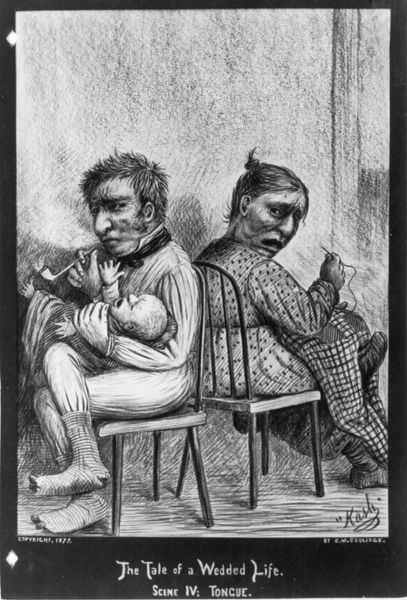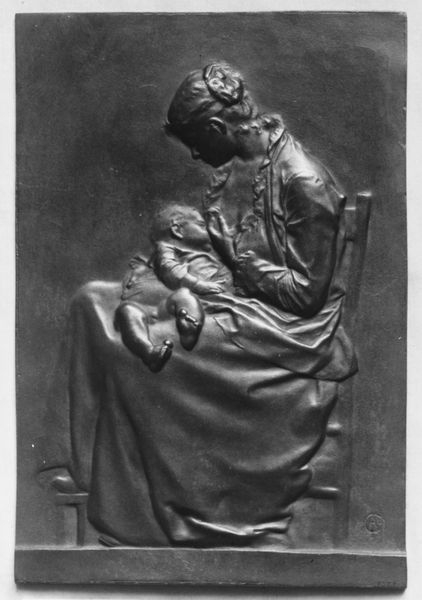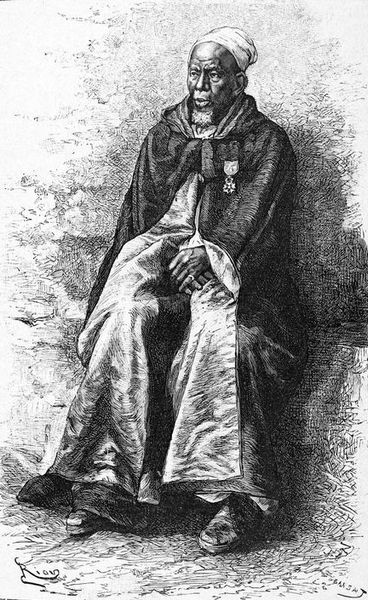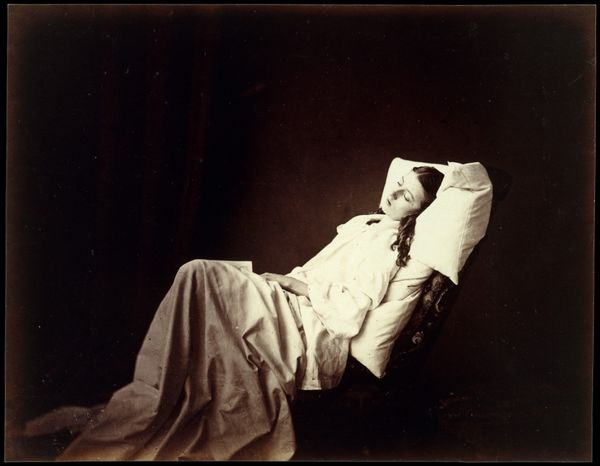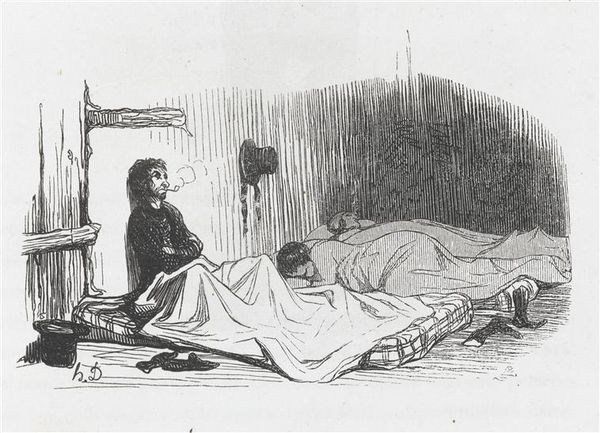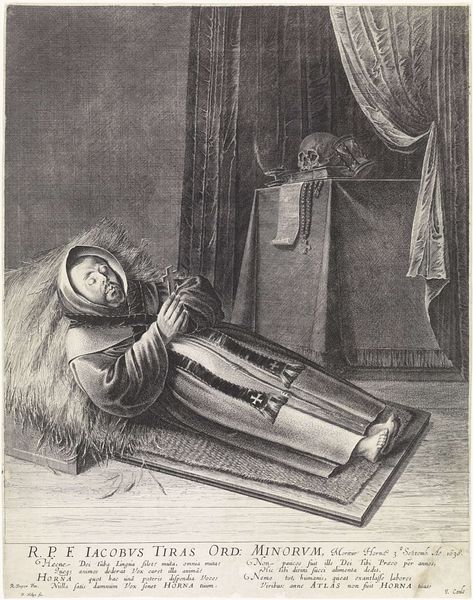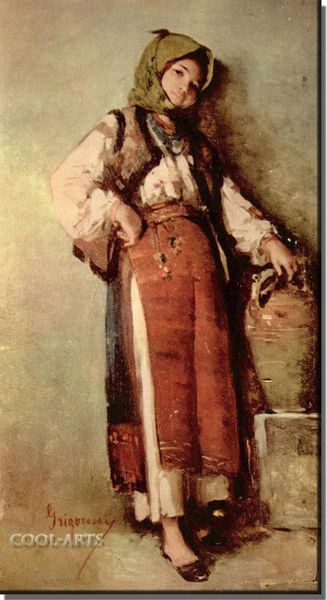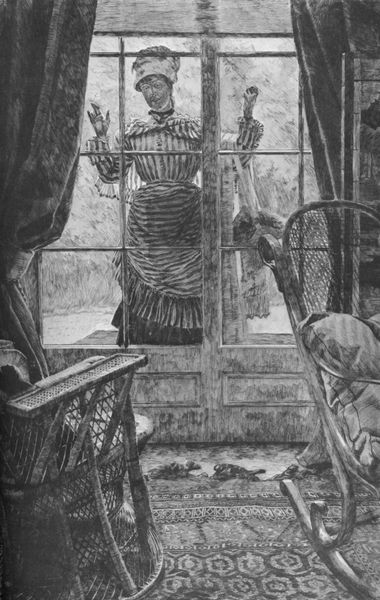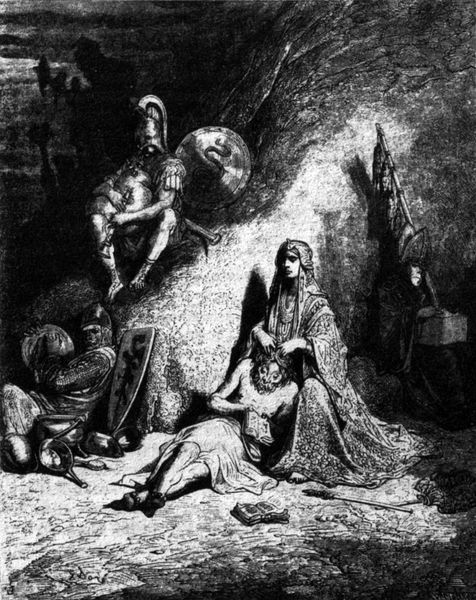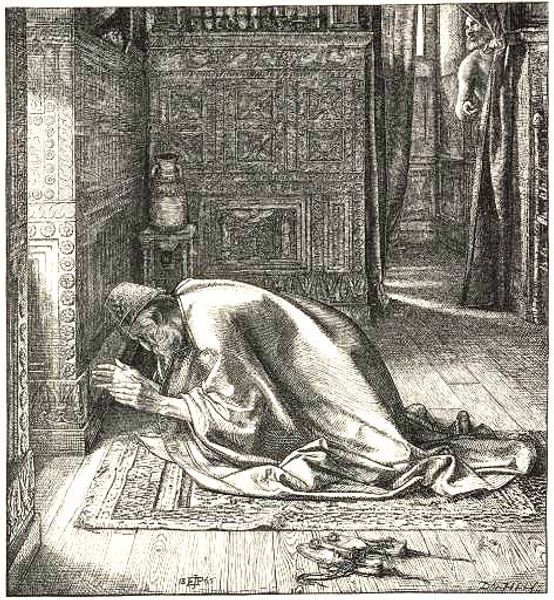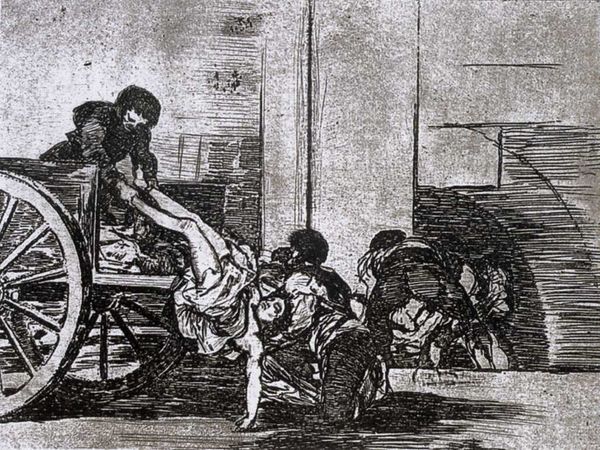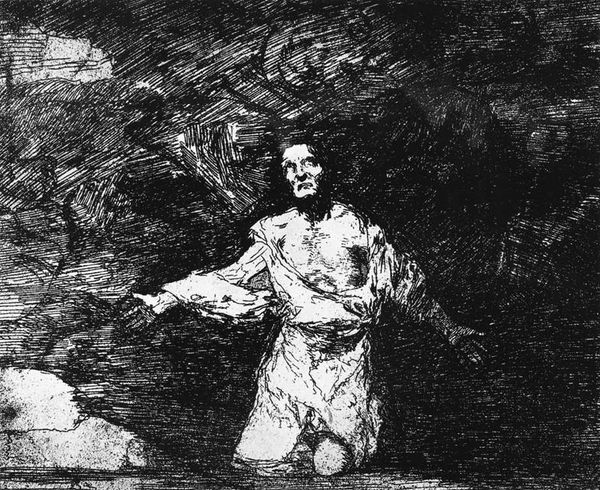
Dimensions: 327 × 210 mm (plate); 353 × 240 mm (sheet)
Copyright: Public Domain
Francisco Goya created "The Garrotted Man" using etching, a printmaking technique dating back to the 1500s. To make this image, Goya would have coated a metal plate with wax, then scratched away lines to expose the metal. Immersing the plate in acid would bite into these lines, creating grooves. Ink is then applied to the plate, filling the etched lines, and the surface is wiped clean. Finally, paper is pressed onto the plate, transferring the ink to create the print. Look closely and you can see the fineness of the etched lines, capturing the stark reality of the execution. The way Goya uses this relatively reproducible medium to depict such a brutal scene speaks volumes about his social and political views. The labor involved is not just Goya's; it's also the labor of the executioner, the system, and the society that allows such acts. Ultimately, Goya's choice of printmaking highlights how an artwork's meaning is embedded in its making, blurring the lines between fine art and social commentary.
Comments
No comments
Be the first to comment and join the conversation on the ultimate creative platform.
